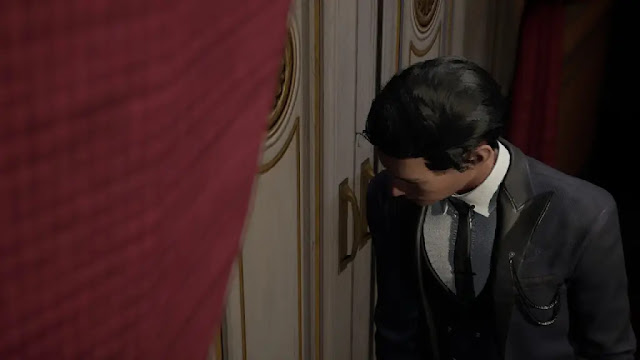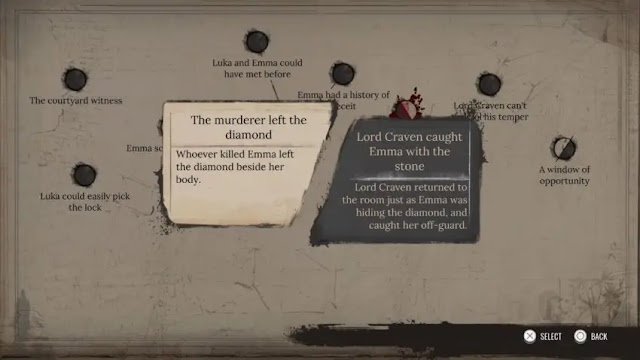Sherlock Holmes Chapter One by developer and publisher Frogwares—PC (Steam) review written by Susan N. with a copy provided by the publisher.
Estimated reading time: 7 minutes
Sherlock Holmes Chapter One is a detective game created by Frogwares who has published several games in the genre. It is an interesting take on the famous character as the game begins before Sherlock becomes renowned for his detective skills. In fact, the game is set even before meeting Mr. John Watson. When jumping into Sherlock Holmes Chapter One for the first time, it’s immediately apparent how young the budding detective is, adding a new layer to the character that has not been explored. After playing the game for quite some time, I’m completely here for this new perspective of Sherlock’s origins.
I’ve been excited about this game for quite some time. Ever since I discovered that there would be another Sherlock game, I was immediately invested in the title. Given that Frogwares has developed the Sherlock games for years, I also knew that this was going to be a spectacular experience. Because what Frogwares set out to do was to create a new experience in the saga. ‘Crime never sleeps’ as they say. This is also true in Cordona where we begin our journey.
Gameplay
Players begin their journey on a boat headed back to his home city of Cordona. He intends to visit his mother’s grave. While he was present at the funeral when he was a child, he doesn’t remember much of what happened. Plus, his estranged brother Mycroft repeatedly asked for him to return to their former home. Now that Sherlock has grown up, there is business to attend to.
After checking into a fancy hotel, Sherlock and his companion Jon decide to relax for the evening. They find a cane has been left on their table. Jon immediately challenges us to find its rightful owner and our adventure begins.
It isn’t long before Sherlock has found himself in the midst of a serious crime that serves as a bit of a tutorial for players. We learn about the various abilities Sherlock has like examining evidence, questioning witnesses and suspects, using concentration to visually see events unfold, eavesdropping on people, tracking suspects, chemical analysis of substances, and using the mind palace to fit the pieces together. The only other ability that isn’t part of the first case is Sherlock’s ability to disguise himself.
So let’s talk about solving cases in Sherlock Holmes Chapter One because it is the primary thrust of the game.
The Mind Palace
There are two types of cases that make it into the mind palace. One of them is persistent throughout the game which is the mystery behind Violet Holmes’ death. While Sherlock grew up knowing about his mother’s sudden death, he learns that certain elements were untrue. His primary case is to learn the truth about what happened to his mother. This is displayed in the bottom right of the mind palace. We also have insight into Sherlock's growth as a character. He is accompanied by his friend Jon who is there every step of the way. Sherlock is not alone through his emotional transformation. I definitely understand the relationship between Jon and Sherlock and loved this addition.
The second mind palace case will always be the main story quests. If a player picks up a case that doesn’t end up in the mind palace, then it is a different type of case. Quests not included in the mind palace are side quests. Anyways, the main story quest is on the left side of the screen. These cases give crucial information about Violet Holmes. So, if players are looking to power through the main storyline, completing the mind palace quests should be the focus.
While there are plenty of players who may not like the idea of the mind palace, I found it to be a brilliant take on how Sherlock’s mind works. As a person who loves investigation games, I can tell you that it is difficult to explain how pieces of a puzzle fit together. Sometimes it just happens naturally and at such a quick speed that our brains make connections before we are aware of the solutions. In Chapter One, the mind palace serves are a visual representation of the clues they’ve discovered. Players are able to tinker around with their assumptions based on the information they’ve gathered. When players click on evidence to choose a solution, the evidence will point towards a suspect. This means that every case in the mind palace will visually show the bits of evidence. It's a nice take on deduction.
Other cases are not shown in the mind palace. Instead, the clues are presented in your casebook. Any side quest that a player works on will be listed in it. One of the things that I like about the casebook is that players get a sense of what needs doing to get all of the evidence. While crime-solving is not served on a silver platter like other games, it gives players enough indication when evidence is missed. Though, key evidence can be collected through the course of an investigation. This is enough to make deductions and solve cases, but without the rest, players might be led astray. Thankfully, the game indicates if a clue requires speaking to others, disguising themselves, or searching for more information. Frankly, the casebook is integral to solving crimes successfully and I love this feature.
Investigation Continued
There is only one investigation feature in Chapter One that I absolutely despised. And that one feature that I felt lacking was the eavesdropping ability. All of the other types of investigations were done brilliantly in that they showed players what Sherlock physically sees and knows based on his education. We also get to see what it’s like to track suspects and witnesses down. Plus, we get to play with chemicals to deduce the makeup of a substance. Comically we are also able to disguise ourselves which serves a useful purpose. While we all know that one should never judge a book by its cover, this game illustrates true human nature. With all those brilliant features the one that irritated me was eavesdropping as it is nothing more than guessing. It's not even based on an educated guess either.
Eavesdropping is the ability to listen in on conversations. It is supposed to give players keywords or phrases from a conversation. Instead of hearing gossip, we get little more than indistinguishable sounds and are expected to guess which phrases are relevant to the case. In my opinion, this feature seems to fill a gap that could have been executed better. What’s worse is that eavesdropping events have a failure chance! At least with QTE’s the players KNOW what button they need to press where eavesdropping is a guessing game. If they fail, players must wait a few seconds before trying again. As I said, this is my most despised element in the whole game. Especially considering how much detail was paid in all other aspects of the game, this one was not implemented with the same level of care.
The Combat
I find myself feeling neutral about the combat system. Though it’s smartly implemented, but I felt it wasn’t really important. Some may have liked the challenge of the bandit caves, but I skipped the combat in Chapter One. For me, it wasn’t the primary thrust. However, I am thankful that Frogwares chose to have combat as an optional feature. This can be activated in the options menus. Due to past feedback from other Sherlock titles, Frogwares decided to overhaul the combat system into something that would work better. And while I wasn’t interested, they did a wonderful job of implementing something that made logical sense.
Sherlock is given the role of a budding police detective early in the game. During his training, Sherlock must go through the new combat system. It is focused primarily on disabling targets as opposed to killing them. This is accomplished by shooting armor off an assailant and blinding them with snuff powder. Once the assailant is unable to do lethal harm to Sherlock, he must go into melee combat to arrest them. This is accomplished by an annoying QTE which thankfully isn’t random, but it’s still a pain point in my books.
Personally, I’m all for disabling an assailant instead of killing them for the purpose of bringing them to justice, but I found that while the combat is better than previous games, it was not something I particularly enjoyed. Everything else in the game was done well, so why bother with QTE’s? In my opinion, it felt like the combat just wasn't good enough, but I’m not going to penalize the game for it. Instead, I skipped the combat portions so that I could focus on the primary thrust of the game - the investigation.
Graphics and UI
Considering the time frame, distinct districts, and wealth of the characters, Frogwares did a fantastic job capturing the aesthetics of 1800’s London. This includes the blatant social issues that plague society about people from different cultures and backgrounds. (And I am glad Frogwares posted a warning before the game begins.) Small details were paid attention to with such care that the world felt real. While there were character models that were used quite often or animations that were too frequent, I appreciated the presentation. Chapter One is a picturesque experience in several places and I’m here for it.
Despite that fact though, there were points in the Old City where my computer lagged - even on medium settings. I’m not sure if it was the water effects or what specifically happened, but I found it bothersome. What’s more interesting is that I didn’t have the same type of lag in an earlier build. While this issue doesn’t detract from the brilliance of the game, it was drastic enough to mention it here. This might have been caused by my graphics card specifically, but it stands to reason that there are some minor graphics issues with the game. Hopefully, the minor lag issues are only present due to my GPU and not an issue with more powerful PCs.
Another thing I’d like to mention is about accessibility options. Normally games are designed with accessibility in mind, but there is one issue that could be a pain point for some. When players use the ability to see interactable objects in the area, players see a small white or yellow dot. Some objects make this indicator practically invisible, making it hard for some players to see. Furthermore, certain objects will appear as yellow dots which is all well and good until it hits nighttime. Fireflies will come out, which is a neat graphical feature, but it further makes the indicator hard to see. I think this could be rectified with the ability to change the color of that indicator at the very least. Regardless, it would be great to see more accessibility options in games like this as this genre is quite large.
Deductive Final Thoughts
Overall, Sherlock Holmes Chapter One is a fantastic detective game that is unique from other games in the series. The focus is on the origins story of Sherlock Holmes which has not been done in video game format. While the game doesn’t hold players hands, it provides a great deal of information to help to progress the story. It even allows for players to skip over combat if it is a feature that they aren’t interested in. Due to the level of care taken in the title, I absolutely adore Sherlock Holmes Chapter One. In my opinion it is one of the best detective games next to games like The Return of Obra Dinn. I absolutely love this title and can’t wait to see what comes out in the future!
Score 9/10




















0 comments:
Post a Comment